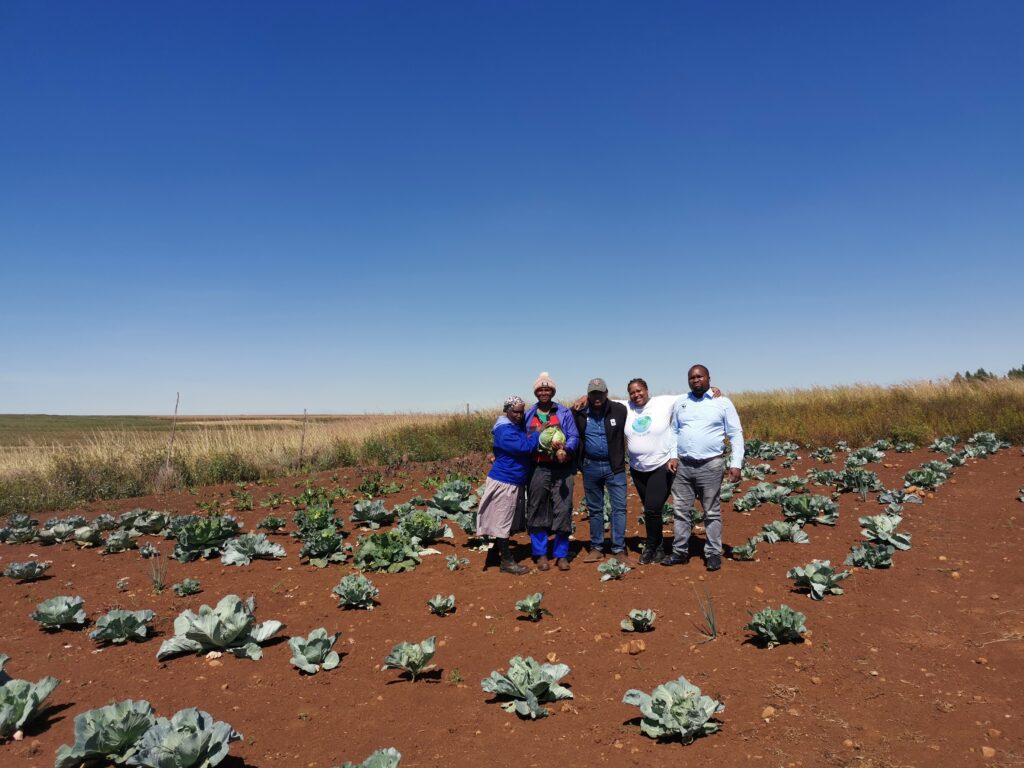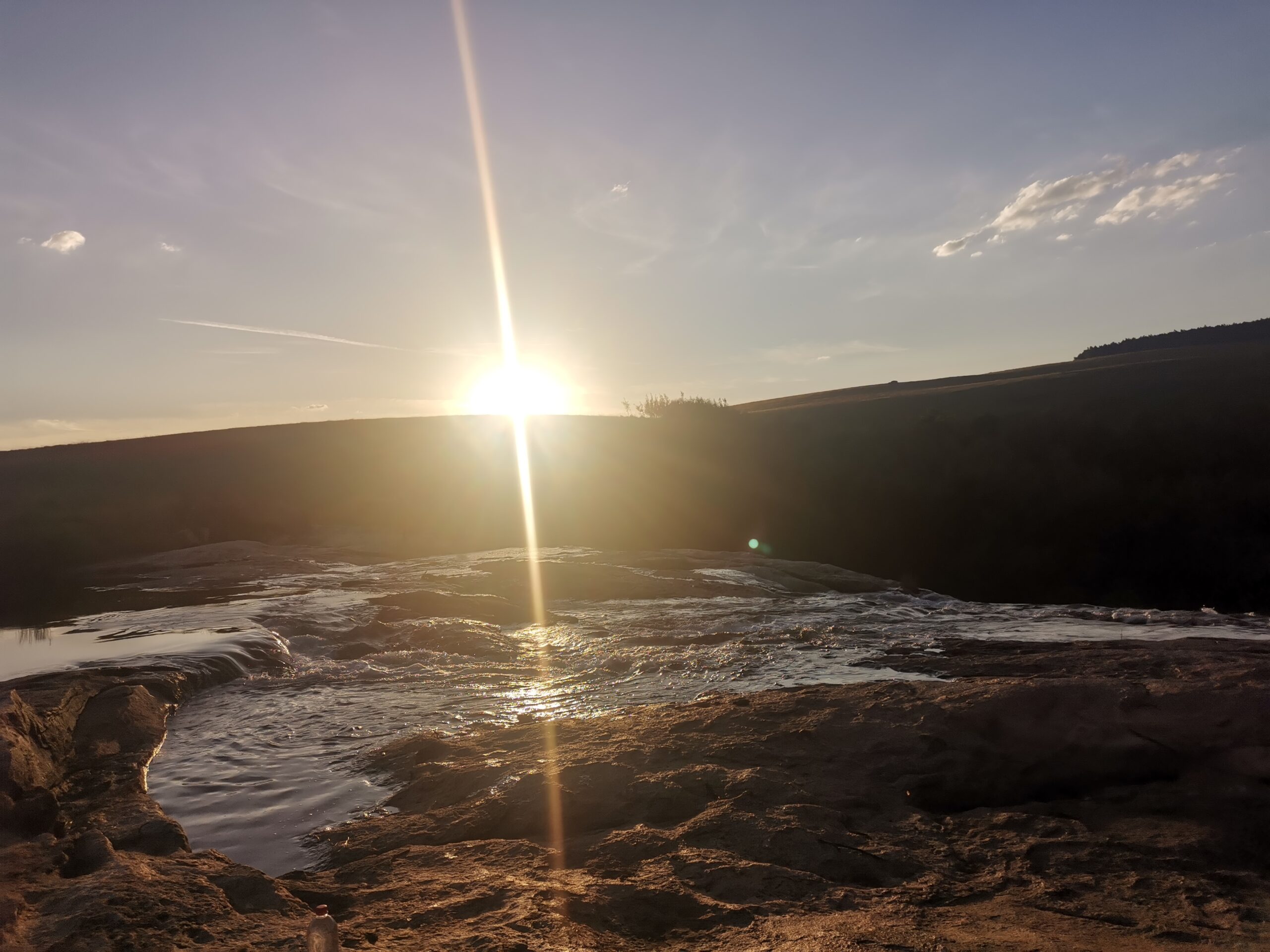The COVID-19 pandemic exposed the food and livelihood vulnerabilities of communities in South Africa, leaving millions of people in dire straits. It called for proactive engagements with communities, like helping them to plant food gardens and pursue farming methods that fight climate change, build resilience and encourage self-sufficiency.
The WWF Nedbank Green Trust is financing several projects in our rural communities to improve food production and livelihood security while expanding South Africa’s protected areas in an effort to manage climate change and disaster mitigation.
“There are approximately two million smallholder farmers in South Africa, many of them farming communally,” says Ayanda Cele, WWF-SA Manager of the Land Reform & Biodiversity Stewardship Programme. “They completely rely on the land and urgently need to become more resilient to dramatic social and environmental impacts such as the Covid-19 pandemic and climate change.”
For this particular project, themed “Enabling community resource security and protected area expansion in a post-COVID-19 future”, Cele and the team worked with women farmers in the communities of Thekwane and Mgundeni in KwaZulu-Natal and the Bambanani and Ukuthanda Ukukhanya Communal Property Associations (CPAs) in Mpumalanga.
“These farmers have established environmentally friendly, climate-resilient vegetable gardens to feed their families and sell the surplus to neighbouring communities and towns,” Cele explains. This project specifically targets rural women who care for the most vulnerable in their communities – the elderly, ill and orphaned – and who do not have access to cattle and the associated income.
‘The farmers receive training in agroecology and financial management,’ says Tobie Badenhorst, Head of Group Sponsorships and Cause Marketing at Nedbank. ‘They engage in sharing their skills and equipment, and are introduced to networks to boost their ability to survive, adapt and thrive in the face of current and future challenges.’
Agroecology is mixed farming (livestock, crops and vegetables) practised in harmony with the natural environment and includes the economic use of water and enrichment of the soil without fertilisers.
“To underpin the sustainability of this project in both KwaZulu-Natal and Mpumalanga, we have strengthened partnerships between these communities and the conservation sector, municipalities and the Department of Health,” Badenhorst adds.
A second leg of the project focuses on looking after our country’s water source areas from the top of the catchment. This requires working with communities to restore the health of the region’s wetlands and grasslands through management practices in conservation-oriented rangeland.
Healthy grasslands, soils and wetlands are an integral part of water management as they slow down the water flow from the top of the catchment that recharges the rivers and streams, and they form a landscape ‘sponge system’ whereby the water can be absorbed across these areas and slowly released during the course of the year. This promotes the improvement and sustainability of livestock and the indigenous plant and animal species in the region. Poor management of water and overgrazing, by contrast, leads to land and species degradation and severe soil erosion.

“In collaboration with several communities and private landowners in KwaZulu-Natal (KZN), Mpumalanga and the Eastern Cape, we are implementing a land-use management approach that is both conservation compatible and contributes to economic growth,” Cele explains. “A good example is the communal grazing system now practised by the Mgundeni community under traditional leader iNkosi Mabaso in Utrecht, KZN, where they have 18 camps. They follow a rotational grazing model aimed at improving the grasses, with stock numbers aligned with the land’s carrying capacity and some of the camps reserved for winter grazing only.”
In the Matatiele district in the Eastern Cape, most of the communal farmers and traditional leaders have formed grazing associations that practise a grazing system that includes traditional methods of rotational grazing and rest, in combination with high-density, fast-rotation grazing. This system has been implemented in partnership with Environmental and Rural Solutions (ERS), a local non-profit and partner of WWF-SA and The WWF Nedbank Green Trust.
The improvement of the region’s wetlands and grasslands as a result has had a positive effect on the quality and quantity of the water supply in the uMzimvubu River, which flows through Matatiele, as well as the condition of the grasslands and livestock in the area. The latter translates into higher prices at the auctions.
“Several grazing associations and communities in Matatiele have since come together to establish the proposed Maloti Thaba Tsa Metsi Protected Environment (MTTMPE), a 29 824 hectare protected area along the upper Umzimvubu watershed. The proposed MTTMPE is at an advanced stage of the declaration process. This is one of several areas that will soon be declared as protected environments, all made possible by the WWF Nedbank Green Trust funding.
“In KZN, we have formally declared the Mkhothane Community Protected Environment, spanning 2 600 hectares, and the Afrikan Farms Protected Environment, spanning 1 563 hectares, in Mpumalanga,” says Cele. “Also in-process is the Mgundeni protected environment in KZN. This is all part of the expansion of South Africa’s protected-areas footprint. We are excited to see people and nature thriving in partnership and look forward to spreading the knowledge and best practices gained to even more parts of our country.”









